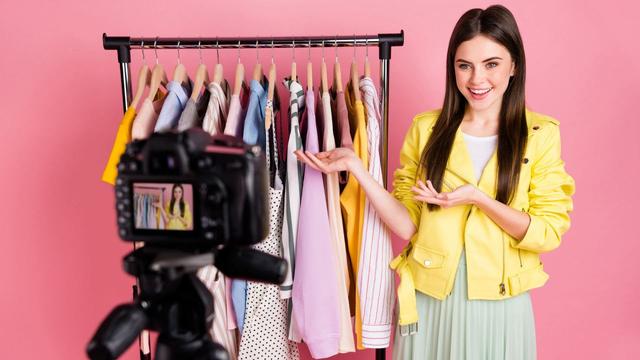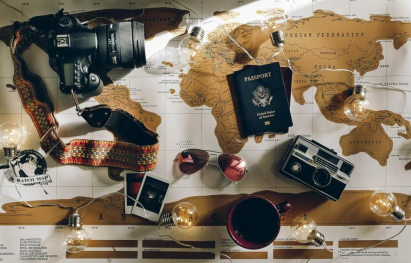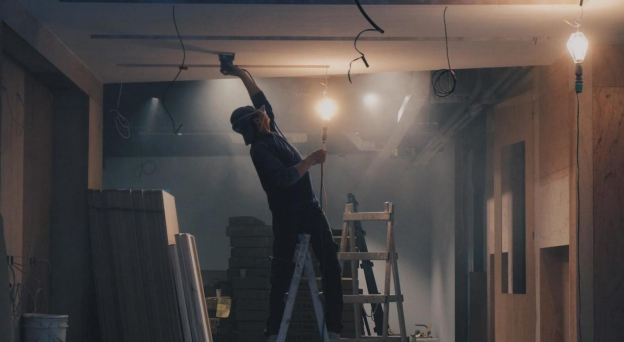Even the most loyal customers had to adapt. Those who used to visit their favorite stores every week, who had friendly salespeople who called them or reserved some clothing that they knew would be of interest to them and for whom buying was not so much a necessity as a program in itself. When the quarantine left everyone locked up, fashion shopping also had to reinvent itself. And it did so quite quickly: hand in hand with technology, brands, designers and showrooms began to reach their audience at home as well. Digital testers, video calls, Whatsapp assistance and even ad hoc applications were deployed in order to continue selling. A year and a half later, in-person shopping is back, but some of these habits seem to be here to stay.
Make the virtual real
Towards the middle of 2020, with the pandemic already well established, the French firm Balmain made a virtual replica of its Parisian store, at 44 rue François. There, the brand's creative director, Olivier Rousteing, greeted customers like a hologram that could assist them in all their purchases, while digital models toured the space to show off the new collection in motion. It was a response to the tremendous decline in sales experienced by the textile world at the beginning of last year. In fact, many brands had to close their stores. For example, the world's second-largest fashion retailer, H&M, plans to close 250 of its 5,000 global stores; while Inditex, owner of Zara, already closed more than 1,000 at the beginning of 2021. This latest decision has its digital corollary: Inditex has invested more than US$ 3,000 million to boost the e-commerce operations of chains such as Zara and Bershka.
In these parts, in the fall of 2020 and with their winter collections already ready, the Naíma and Calandra brands (joined by the same owner) found a way to show them in their "Virtual Shop". It was an immersive experience that invited them to visit the physical stores digitally and buy the desired items in a 360º tour. From Unicenter, for Naíma and from Patio Bullrich, for Calandra; the proposal was to allow each corner to be approached and to see the garments presented in the same way that it would be done in the physical space. And when selecting a product, it was redirected to the e-shop to finalize the purchase. What this proposal provided was to revive the sensation of walking in the midst of the strictest confinement. “We tried to think of strategies that would keep our clients animated and in contact, which is why we applied this new way of rediscovering ourselves and providing a breath of fresh air,” Nicolás Pollola, general manager of both brands, explained at the time.
Are you in your final year and a thesis submission date is getting closer? These last few miles could be the hardes… https://t.co/W3Jpq8wlSR
— Research Exchange Thu May 30 13:00:01 +0000 2019
Other strategies that were enabled forever? A WhatsApp number available for online purchases that allows all kinds of queries to be answered, while the digital store proposes combinations of garments and offers a curator similar to a fashion magazine.

Personal Shoppers are located in the personalized query line, another resource that is here to stay and is used by many brands. It consists of a salesperson who, through a video call, tours the premises with the client and advises them. You can answer queries about materials, falls, fits and other issues that are not always explained in the basic information of the garment. Sometimes, even, the seller can be asked to try the product to see live and direct how it looks and continue to settle doubts. In general, this service is implemented with an online appointment request, since it requires a dedicated time. At the Nike Store in Alto Palermo, for example, they offer this advice through what they call Nike Live Expert Sessions.
When in 2021 the second wave forced a new closure of stores, from Casiopea, a fresh and timeless clothing store in Recoleta, they also decided to implement a new purchase method for those clients who lived within the city. “We made available free delivery of between three and 10 garments to the buyers' homes. By placing a code in the online store, they could receive the clothes at home, try them on in peace, look at themselves in the mirror and put together outfits with other things from their wardrobe. And everything that did not fit them could also be returned for free”, says Carmen García Balcarce, at the head of the label, who assures that the measure was very well received.
Professionalize the boom
But the brands were not alone in their efforts. Along with all this movement, new ventures were emerging that professionalized these services to provide them in an integrated manner. The pioneer in the country was "Go Jiraf", a platform that allows access to personal shoppers, make personalized purchases, have access to exclusive launches and become a new window for all businesses. And although it was born in Argentina, it begins to take off at the regional level. It is enough to look at the world to verify that this modality, for example, in China, represents 20% of e-commerce; and in the United States and Europe, by 2023, it is estimated that it will report sales of some US$25 billion. What is the reason for this fury? Because the service is so agile and simple that industry metrics show that average tickets increase by two and a 30% conversion is evident; that is to say that with “live shopping” the purchase decision grows. Something that makes a lot of sense in a world of millennials who prefer to interact online than buy in person.
read too
What are the 5 most chosen hairstyles this season
Go Jiraf works with three different modes of “live shopping”. The first is "one to one", with a particular personal shopper who assists from the store in real time and assembles the cart so that it can be purchased within the same call. The second is "one to many", a tool that allows a virtual event to expose the brand, news or launches. Sometimes these events are held with influencers and they always allow you to buy without leaving the live video. The third is "one to few" for which more intimate group meetings are held, to make purchases with programmed invitations. This is ideal for direct sales products. “Traditional e-commerce was practical, but there was no real personalized attention and the detail of the products was never exhaustive enough to determine the purchase. Go Jiraf comes to unite the best of both worlds: the immediacy and practicality of virtual shopping with the warmth and follow-up of face-to-face shopping”, point out the partners behind the venture, Patricio Cossio and Agustín Campos. Among other brands, today they work with the Rapsodia app, L'Oreal, 47 Street, Desiderata, Portsaid, Cardón and even showrooms like Blue Sheep.
For experts, what is coming in the world of fashion will be a hybrid. Although there will always be those who want to touch and test themselves, digital will continue to gain followers and increase its numbers, especially as the native generation of this world begins to be the predominant consumer. Hand in hand with this growth, strategies will be further sharpened, along with technology that will continue to innovate. The experiences will be “omni-channels”. Throughout this journey, however, something remains: even on the other side of the screen, we continue to seek the gaze of others in the face of the eternal question of “how does it look on me?”.




